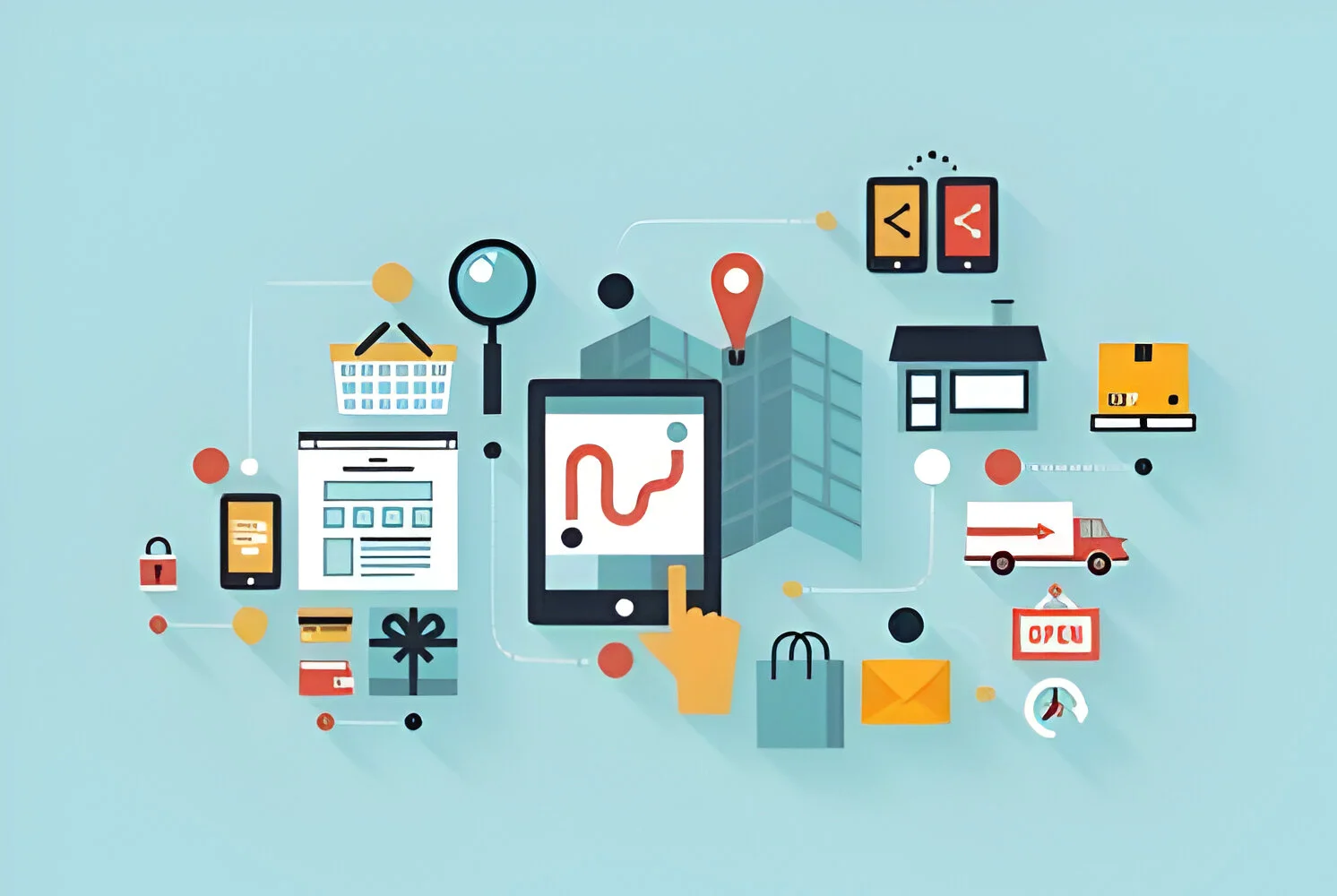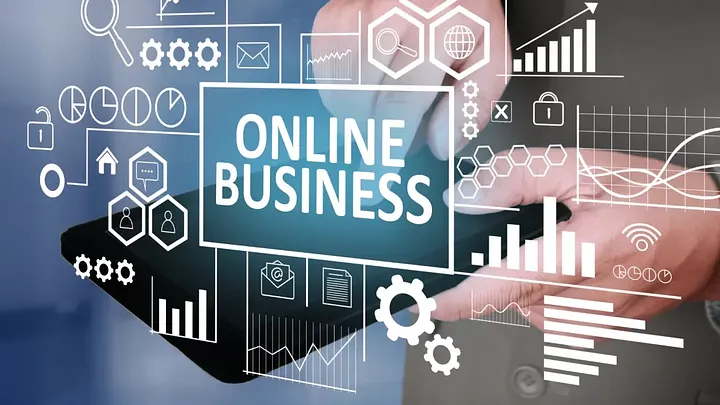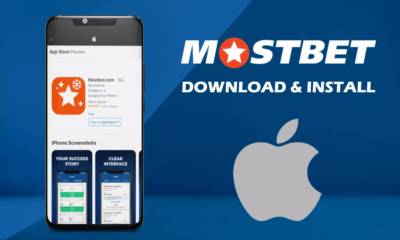Business
The Rising Power of Sales Engagement Tools: Revolutionizing Customer Connections

In today’s fast-paced and hypercompetitive business landscape, effective sales engagement has become more critical than ever. Building strong relationships with potential customers and delivering personalized experiences are the cornerstones of successful sales efforts. To accomplish these goals, sales teams are turning to a game-changing arsenal of tools known as sales engagement tools. Let’s dive into this exciting revolution that is transforming customer connections and driving sales success.
- Understanding Sales Engagement Tools: An Overview
Sales engagement tools are a suite of software solutions designed to enhance sales representatives’ ability to engage with prospects and customers throughout the sales cycle. These tools offer a wide range of functionalities, including email automation, call tracking, content management, analytics, and more. By automating repetitive tasks, providing valuable insights, and facilitating personalized interactions, these tools empower sales professionals to work smarter and close deals faster.
- Boosting Efficiency with Automation
One of the key advantages of sales engagement tools is their ability to automate time-consuming and repetitive tasks. Sales representatives can leverage automation features to streamline email outreach, follow-ups, and scheduling. By automating these activities, sales teams can save valuable time, allowing them to focus on building genuine connections and nurturing relationships with their prospects.
- Personalization: The Secret Ingredient
In today’s era of mass communication, personalization has become the holy grail of effective sales engagement. Sales engagement tools provide a wealth of features to help tailor interactions and messages to each prospect’s unique needs and preferences. From dynamic email templates to personalized content recommendations, these tools enable sales reps to deliver relevant and targeted communications that resonate with their audience. By demonstrating a genuine understanding of prospects’ pain points and goals, sales professionals can establish trust and increase their chances of closing deals.
- Seamless Multichannel Communication
In an increasingly digital world, sales engagements happen across multiple channels, including email, phone calls, social media, and even video conferencing. Chase Sapphire Reserve serve as a centralized platform, integrating all these communication channels into one convenient interface. This integration allows sales representatives to track and manage all interactions efficiently, ensuring consistent messaging and avoiding communication gaps. By having a complete view of prospect engagement history, sales reps can have more meaningful conversations and avoid redundant efforts.
- Analytics: The Power of Data-Driven Insights
Sales engagement tools are equipped with robust analytics capabilities that provide invaluable insights into sales performance and customer behavior. These tools track email open rates, click-through rates, call duration, and other metrics to help sales teams understand which approaches are most effective. Armed with these data-driven insights, sales professionals can continuously refine their strategies, optimize their outreach efforts, and identify areas for improvement. This data-centric approach empowers sales teams to make informed decisions that drive better results.
- Collaboration and Alignment Across Teams
Sales engagement tools also foster collaboration and alignment among different teams within an organization. By centralizing customer data, communication history, and sales collateral, these tools facilitate seamless collaboration between sales, marketing, and customer success teams. A unified platform allows for easy information sharing, ensuring consistent messaging and enhancing the overall customer experience. With everyone on the same page, organizations can deliver a cohesive and personalized journey for their prospects and customers.
- The Future of Sales Engagement
As technology continues to advance, sales engagement tools will evolve and become even more sophisticated. Artificial intelligence and machine learning algorithms will enable these tools to provide predictive analytics, suggesting the most effective engagement strategies based on historical data and customer behavior patterns. Virtual reality and augmented reality may also play a role in creating immersive sales experiences, allowing prospects to visualize products or services in real-world contexts.
- Analytics: The Power of Data-Driven Insights
Sales engagement tools offer robust analytics capabilities that provide invaluable insights into sales performance and customer behavior. These tools track key metrics such as email open rates, click-through rates, call duration, and response times, allowing sales teams to gain a deep understanding of their effectiveness. By analyzing this data, sales professionals can identify trends, spot areas of improvement, and make data-driven decisions to optimize their sales strategies. They can also track the engagement history of prospects, enabling them to tailor their approach based on individual preferences and interests. With these powerful insights, sales engagement tools empower teams to continually refine their outreach efforts and increase their chances of success.
- Collaboration and Alignment Across Teams
Sales engagement tools play a crucial role in fostering collaboration and alignment among different teams within an organization. By centralizing customer data, communication history, and sales collateral, these tools facilitate seamless collaboration between sales, marketing, and customer success teams. A unified platform allows for easy information sharing and real-time updates, ensuring consistent messaging and enhancing the overall customer experience. Sales reps can collaborate with marketing teams to align their messaging and leverage targeted campaigns based on customer insights. Customer success teams can also access relevant sales engagement data to understand customers’ pain points and provide proactive support. By breaking down silos and promoting cross-functional collaboration, sales engagement tools enable organizations to deliver a cohesive and personalized journey for their prospects and customers.
- The Future of Sales Engagement: Advancements and Possibilities
As technology continues to advance, sales engagement tools will evolve to meet the ever-changing needs of sales professionals. Here are some exciting advancements and possibilities that the future holds:
Artificial Intelligence (AI) and Machine Learning (ML): AI and ML algorithms will play a significant role in enhancing sales engagement tools. These technologies will enable predictive analytics, suggesting the most effective engagement strategies based on historical data and customer behavior patterns. AI-powered chatbots may also assist sales reps by automating routine tasks, providing instant responses to customer inquiries, and freeing up their time for more meaningful interactions.
Virtual Reality (VR) and Augmented Reality (AR): VR and AR technologies hold the potential to revolutionize sales engagement by creating immersive experiences for prospects. Sales reps could use VR to showcase products or services in a virtual environment, allowing customers to visualize and interact with them as if they were physically present. AR can enhance the sales process by overlaying virtual information onto the real world, providing real-time product demonstrations or assisting with complex installations.
Integration with Customer Relationship Management (CRM) Systems: Sales engagement tools will continue to integrate seamlessly with CRM systems, providing a comprehensive view of the customer journey. This integration will enable sales teams to access customer data, interactions, and insights in one place, empowering them to provide personalized experiences and make data-driven decisions.
Enhanced Security and Compliance: With data privacy concerns on the rise, future sales engagement tools will prioritize robust security measures and compliance with regulations like GDPR and CCPA. Sales professionals can confidently engage with prospects, knowing that their data is protected, and maintain trust throughout the sales process.
In conclusion, sales engagement tools are continuously evolving to meet the demands of modern sales professionals. With advanced analytics, collaboration features, and future technological advancements, these tools are revolutionizing customer connections, enabling personalized interactions, and driving sales success. By embracing and leveraging the power of sales engagement tools, organizations can stay ahead in the competitive marketplace and create meaningful relationships with their prospects and customers.
Business
Digital Product Reselling: The Business Model You Shouldn’t Ignore in 2025

As the global workforce shifts toward digital-first entrepreneurship, one business model has quietly risen in popularity—delivering low startup costs, flexible operations, and scalable income. That model is reselling digital products.
From marketers and creators to educators and side hustlers, more people are entering the digital economy by launching their own online businesses based entirely on resellable digital goods—no inventory, shipping, or manufacturing required.
In this article, we break down why reselling digital products is one of the smartest ways to start an online business today—and how to leverage PLR (Private Label Rights) and MRR (Master Resell Rights) to maximize growth and profits.
Why Reselling Digital Products Makes Sense
Digital products—such as eBooks, courses, templates, software, and online subscriptions—are intangible but high in demand. They can be downloaded or accessed instantly and often solve specific, urgent problems for buyers.
What makes digital product reselling so attractive is its business simplicity:
- Zero physical inventory
- Unlimited sales potential per product
- Low maintenance, high margin model
- Fully online, location-independent
- Immediate delivery to customers
With consumer behavior increasingly shifting toward digital consumption, the opportunity to build a profitable online store using digital products has never been greater.
Understanding PLR and MRR: The Two Growth Levers
To build your product lineup, you don’t have to create everything from scratch. PLR and MRR licenses allow you to use already-created products with the legal right to sell them.
What Is PLR (Private Label Rights)?
PLR products give you permission to:
- Edit and modify content
- Add your branding
- Resell under your name as your own product
This is ideal for entrepreneurs looking to create a personalized, branded business. You can repurpose the content to match your tone, voice, or niche.
For example: A PLR productivity guide could be turned into a branded course for solopreneurs, complete with your logos and messaging.
What Is MRR (Master Resell Rights)?
MRR products come with the ability to:
- Resell the product exactly as it is
- Allow your customers to resell it further
MRR is perfect if you want to launch faster without modifying content. You purchase the rights, list the product on your store, and collect payments. It’s an ideal strategy for building a catalog-based online business.
How to Launch a Digital Reselling Business: A Strategic Overview1. Choose Your Niche
Targeting a defined audience is crucial. Whether you’re interested in personal finance, online marketing, wellness, parenting, or business skills, choose a space where:
- You understand the audience’s needs
- There is clear, consistent demand
- You can stand out with tailored offers
Tools like Google Trends, SEMrush, and keyword research tools will help validate your niche.
2. Source Your Digital Products
Quality products are non-negotiable. Instead of downloading unreliable files from random marketplaces, use a trusted platform like Earnera.co.
Earnera.co provides:
- A massive library of over 5,000 digital products
- Clearly labeled PLR and MRR licenses
- Niche-specific recommendations to guide your strategy
- High-quality content that’s regularly updated
With Earnera, you reduce guesswork and gain access to market-tested products ready for resale.
3. Build Your Website or Storefront
Use no-code platforms like:
- Shopify for full-scale eCommerce
- Gumroad or Podia for fast, digital-first sales
- WordPress with WooCommerce for custom functionality
Be sure to include:
- Clear product descriptions
- Visual previews (images or mockups)
- SEO-optimized metadata and product titles
- Mobile responsiveness and fast load times
4. Implement Secure Payment Gateways
To build trust and process transactions, set up integrations with:
- PayPal
- Stripe
- Square
Offer multiple payment options to reduce cart abandonment and improve customer experience.
5. Promote Your Business
Once your store is ready, visibility becomes your top priority. Focus on:
- Search Engine Optimization (SEO) for organic traffic
- Email marketing to nurture leads and repeat buyers
- Social media campaigns to build brand awareness
- Influencer and affiliate partnerships to expand reach
Pro tip: Many successful resellers also offer free lead magnets (often derived from PLR content) to build their subscriber base.
Don’t Just Sell—Scale
Once you’ve made your first few sales, it’s time to focus on scalability. Here’s how:
- Automate your email sequences and follow-ups
- Expand your product line with additional PLR or MRR offers
- Build bundles, upsells, or even monthly memberships
- Create an affiliate program to grow your sales force
- Track performance using analytics tools to improve conversions
With the right systems in place, your digital product business can evolve into a sustainable income stream.
Final Thoughts: The Digital Reseller’s Edge
Digital product reselling is no longer a hidden opportunity. It’s a real business model that thousands are using to replace traditional jobs, build passive income, or expand their brand.
The combination of high demand, low startup risk, and PLR/MRR licensing flexibility makes this model ideal for modern entrepreneurs.
To get started, you need three things:
- A clear niche
- High-quality digital products
- A trusted partner like Earnera.co
Whether you’re selling your first eBook or launching a full digital storefront, Earnera.co helps you build the right foundation for success in today’s online economy.
Resell smart. Start lean. Scale globally.
Business
Resell Digital Products in 2025: A Smart Start for Aspiring Online Entrepreneurs

The digital economy has redefined what it means to start a business. Gone are the days of storefront leases, physical inventory, and shipping logistics. Today, the path to building a profitable online business can begin with nothing more than a laptop, internet connection, and access to the right digital assets.
One of the most strategic ways to enter the online space is by reselling digital products—especially those licensed with PLR (Private Label Rights) or MRR (Master Resell Rights). These models offer aspiring entrepreneurs the ability to launch fast, minimize costs, and tap into a global marketplace.
If you’re looking for a business model that’s scalable, low-risk, and future-proof, here’s why reselling digital products should be on your radar—and how platforms like Earnera.co can help you start the right way.
What Are Digital Products—and Why Resell Them?
Digital products are intangible items delivered electronically—think eBooks, templates, online courses, software, graphics, and subscriptions. Unlike physical goods, they don’t require storage, shipping, or handling.
Reselling digital products means you’re offering pre-created content to customers, typically through your own website or storefront, and collecting revenue per download or license.
This model is particularly effective because:
- There’s no inventory to manage
- Fulfillment is instant and automated
- The same product can be sold repeatedly
- Profit margins are significantly higher than with physical goods
For beginners and solo entrepreneurs, this makes digital reselling one of the most attractive entry points into e-commerce.
PLR vs. MRR: Which Rights Should You Use?
Understanding the difference between PLR and MRR is essential when building a digital resale business.
PLR: Private Label Rights
With PLR, you can modify, rebrand, and sell the product as your own. You can:
- Add your logo and brand colors
- Edit the content to reflect your voice
- Bundle it with your services or other products
- Position yourself as the creator
PLR products are ideal for business owners who want to establish authority, customize offerings, and build long-term brand equity.
MRR: Master Resell Rights
MRR allows you to sell the product as-is and pass on the same rights to your buyers. You cannot modify the product, but you can:
- Resell it through your store
- Offer it as a bonus or upsell
- Let your buyers also resell it under MRR terms
MRR is perfect for entrepreneurs who want a plug-and-play sales strategy with minimal customization involved.
Together, PLR and MRR provide flexibility for both passive income seekers and brand builders.
How to Start Reselling Digital Products1. Identify a Target Market
Choose a niche with real demand. Whether it’s fitness, business development, parenting, or digital marketing, select a space where customers are actively looking for content, tools, or education.
Use tools like Google Trends, Ubersuggest, or Semrush to validate your niche before investing in product inventory.
2. Source Licensed Products
This is where many first-timers go wrong—by downloading poor-quality or unlicensed materials from questionable sources. To avoid copyright issues and ensure content quality, use a reputable marketplace like Earnera.co.
Earnera.co offers:
- Thousands of legally licensed PLR and MRR products
- Access to trending, best-selling digital assets
- Tools to help you select the right niche and products
- A growing resource base for new and seasoned resellers
With over 5,000 curated products, Earnera simplifies the entire reselling journey.
3. Set Up a Digital Storefront
You don’t need a complex tech stack. Platforms like Shopify, Gumroad, or WordPress with WooCommerce can be used to build your store. Focus on:
- Clean product pages
- Secure checkout
- Mobile responsiveness
- SEO-optimized descriptions and meta tags
Even a simple one-page landing site can be effective when well-designed and targeted.
4. Add a Payment Gateway
Enable payments using trusted processors like PayPal, Stripe, or Square. Offer multiple payment options to remove friction and make your checkout process smooth.
5. Market Your Products
Once your store is live, focus on visibility. Some of the most effective strategies include:
- Search Engine Optimization (SEO): Target niche-specific keywords with blog posts and product pages.
- Social Media Marketing: Share product previews, tips, or case studies across platforms like Instagram, LinkedIn, and Pinterest.
- Email Marketing: Build a subscriber list by offering a free PLR-based download and promote new products via newsletters.
- Affiliate Marketing: Allow others to promote your store in exchange for a commission.
- Influencer Outreach: Collaborate with content creators in your niche to expand reach.
6. Track, Improve, and Scale
Use Google Analytics and sales dashboards to monitor performance. Learn what sells well, which pages convert, and how your customers engage.
Over time, consider:
- Expanding your product catalog
- Creating bundles and seasonal offers
- Launching an affiliate program
- Automating delivery, customer support, and lead generation
Final Thoughts: Digital Reselling Is a Business Model for the Future
As the world becomes increasingly digital, the demand for instantly accessible, high-value content continues to grow. The ability to resell digital products—especially with PLR and MRR licenses—offers a strategic opportunity to start and scale a business without high upfront costs or operational complexity.
Whether you’re seeking a side income or planning a full-time digital venture, the tools and platforms now exist to make that goal realistic.
And when it comes to sourcing, licensing, and scaling your product base, Earnera.co is one of the most trusted destinations for digital entrepreneurs ready to launch.
Start lean. Scale smart. Resell digital.
Business
Debunking the Myths: Starting an Online Business with Digital Products Isn’t as Hard as You Think

In the digital age, starting an online business has become more achievable than ever—but for many aspiring entrepreneurs, myths and misconceptions still create hesitation. Some believe you need to be a tech expert, build your own product from scratch, or invest thousands to get started.
In reality, none of those are true.
If you’ve considered launching a business from home, digital products offer a simplified and scalable model. And when paired with PLR (Private Label Rights) and MRR (Master Resell Rights) resources, the process becomes even more approachable.
This article breaks down the myths and outlines how platforms like Earnera make digital entrepreneurship not just possible—but practical.
Myth #1: “You Have to Create a Product from Scratch”
Reality: You don’t need to spend months developing a course, writing an eBook, or designing templates.
Thanks to PLR and MRR products, you can start with fully developed, market-ready digital assets. These products are legally licensed for resale, and in many cases, customization is encouraged.
The PLR Advantage
Private Label Rights allow you to:
- Modify, edit, and rebrand digital products
- Use them as your own
- Sell them under your business name
Whether it’s a health guide, social media template, or marketing course, you can launch quickly with branded, high-value content.
The MRR Advantage
Master Resell Rights let you:
- Sell the product directly as-is
- Grant resale rights to your buyers
- Create bundles or bonus products for added value
MRR is particularly effective for affiliate marketers and online store owners looking to expand product lines without development delays.
Myth #2: “It Costs Too Much to Start an Online Business”
Reality: With the right strategy, you can start an online business with minimal investment.
There’s no need to stock inventory, rent warehouse space, or hire a developer. Digital products eliminate physical logistics, and platforms like Earnera provide affordable access to thousands of pre-licensed assets.
You don’t need a big budget to start—you need the right tools.
Myth #3: “Only Experts Can Sell Digital Products”
Reality: Expertise is valuable, but not mandatory. What matters more is understanding your audience and offering relevant solutions.
PLR and MRR content often comes from industry experts and professionals—you’re tapping into proven material. If you know your niche and can identify what your target audience needs, you can package and position these digital products effectively.
With platforms like Earnera, you’re given access to well-crafted, high-quality resources that are ready to be marketed and sold, regardless of your experience level.
Myth #4: “Digital Products Can’t Be Profitable”
Reality: Digital products offer some of the highest profit margins in e-commerce.
- No shipping fees
- No raw material costs
- No inventory loss
- Unlimited scalability
One product can be sold repeatedly with zero replenishment costs, and since delivery is automatic, fulfillment is instant.
This model supports long-term passive income—especially when combined with email automation, SEO, and affiliate strategies.
How to Actually Start: A Simplified Approach
- Choose Your Niche
Focus on a specific audience or problem (e.g., entrepreneurs needing social media content, busy parents looking for time-saving tools, or fitness coaches seeking client resources). - Source Your Products
Use Earnera to find professionally created PLR and MRR products aligned with your audience. - Customize or Package
If you’re using PLR, rebrand it. If it’s MRR, package it for your store or offer it as a limited-time deal. - Set Up a Simple Sales System
Use platforms like Gumroad, Shopify, or WordPress with WooCommerce to sell digital downloads. - Promote Strategically
Use SEO-optimized content, social media posts, and email marketing to drive traffic.
Why Earnera Is the Go-To Platform for Digital Product Entrepreneurs
Earnera specializes in digital products specifically designed for resellers. Their marketplace offers:
- Fully licensed PLR and MRR products
- High-quality digital assets in profitable niches
- Clear licensing terms for each product
- A user-friendly platform ideal for beginners and experienced sellers alike
With Earnera, you’re not just getting a product—you’re getting a head start in digital entrepreneurship.
Final Thoughts
Starting an online business doesn’t require a perfect product, big budget, or technical expertise. What it takes is a smart strategy, the right tools, and a willingness to begin.
Digital products—especially when supported by PLR and MRR licensing—offer a scalable, sustainable, and profitable model for anyone looking to build a business online.
Don’t let the myths stop you. With platforms like Earnera, you can start small, learn fast, and grow confidently.
-

 News3 years ago
News3 years agoInto the thick of it
-

 Business3 years ago
Business3 years agoIfvod television – A Prologue To The Application
-

 About2 years ago
About2 years agoTop 5 TouchCric.com Cricket Determinations to Watch
-
News2 years ago
10.0.0.0.1: Your Essential Gateway to Router Configuration
-

 Business11 months ago
Business11 months ago9 Most Popular Promotional Items
-

 Technology3 years ago
Technology3 years agoMostbet app in Azerbaijan – a brief overview
-

 Business3 years ago
Business3 years agoTop 4 Sources for Norstrat Consulting Company
-

 About2 years ago
About2 years agoDownload Hindi movies and web series at movieverse.com 2023


